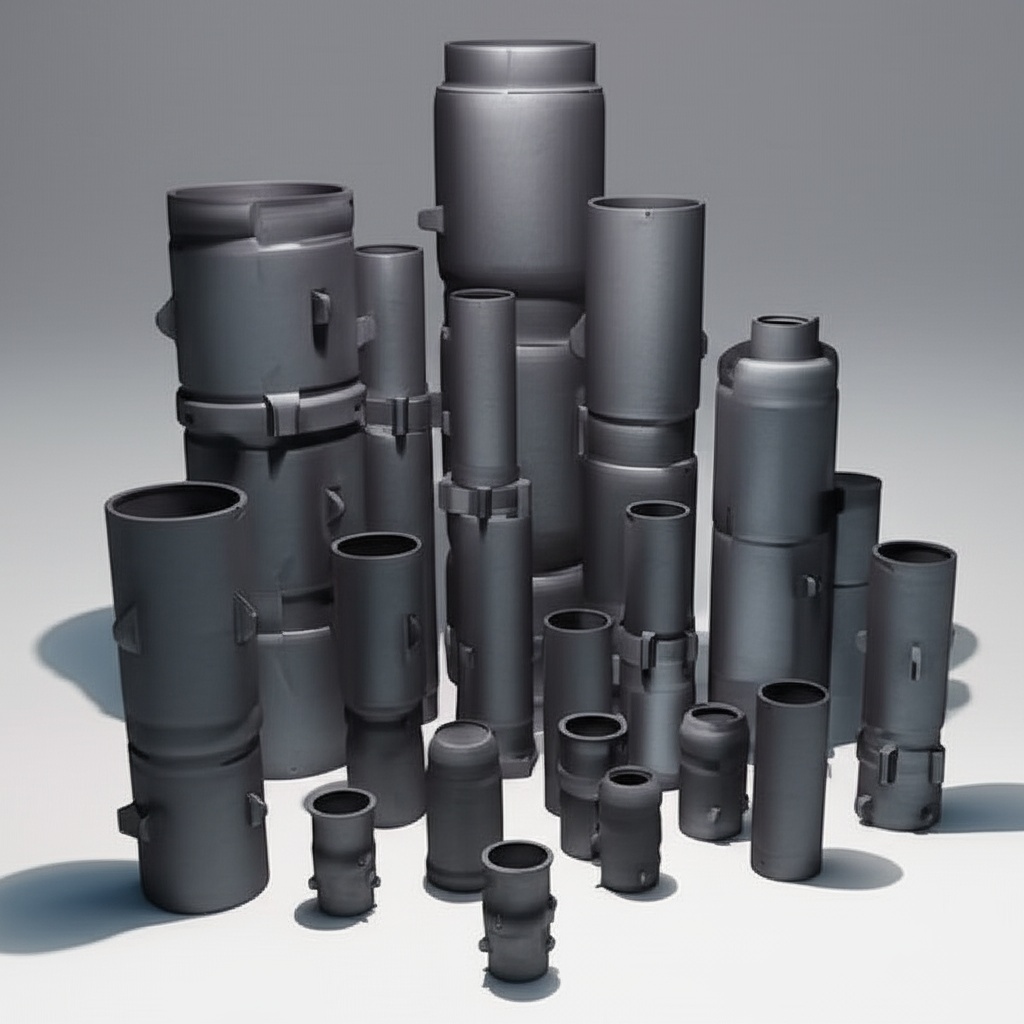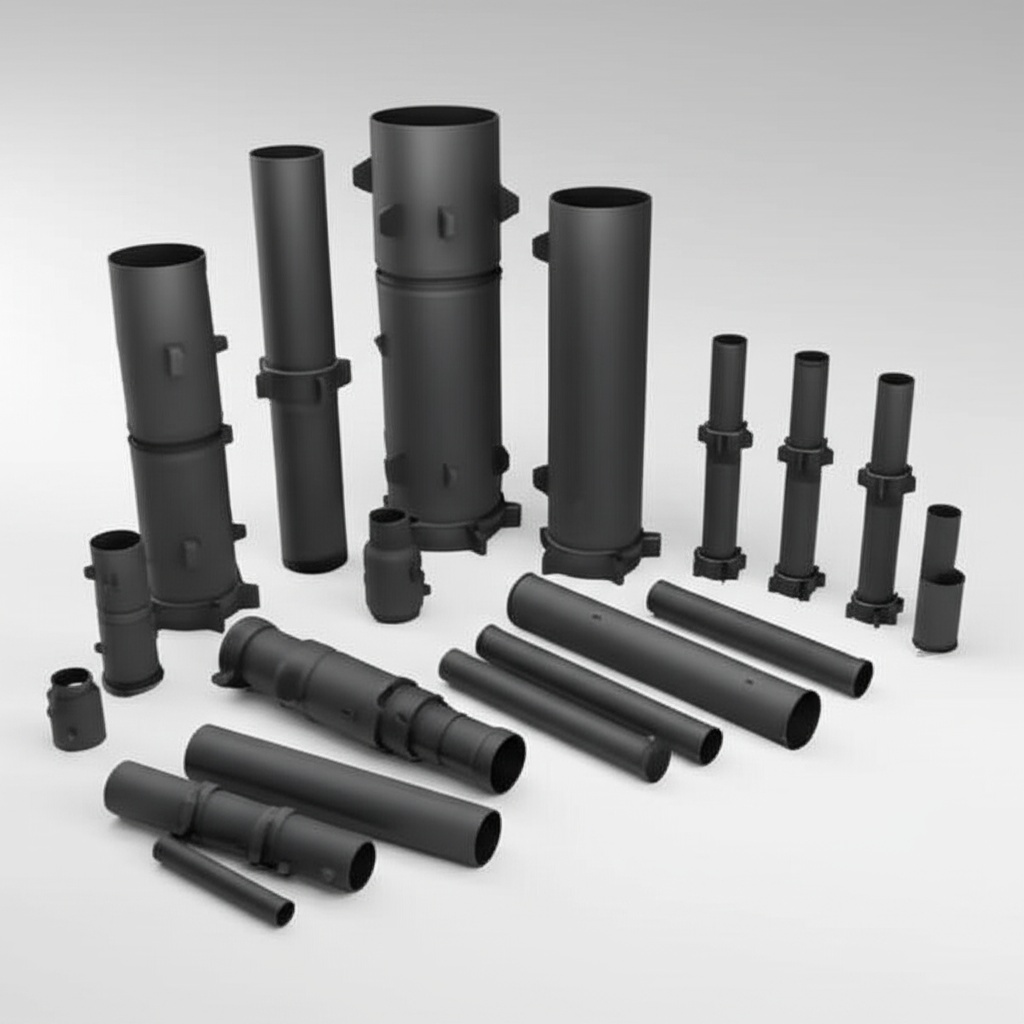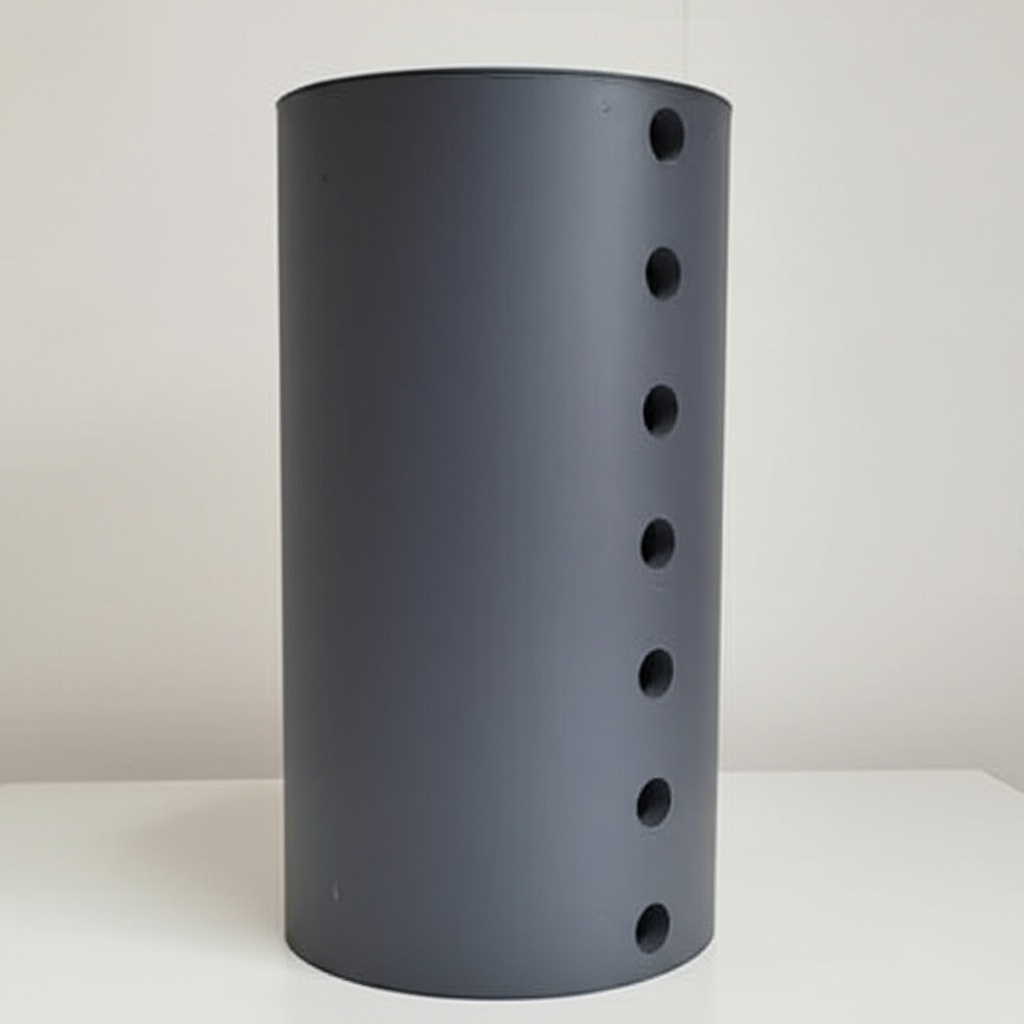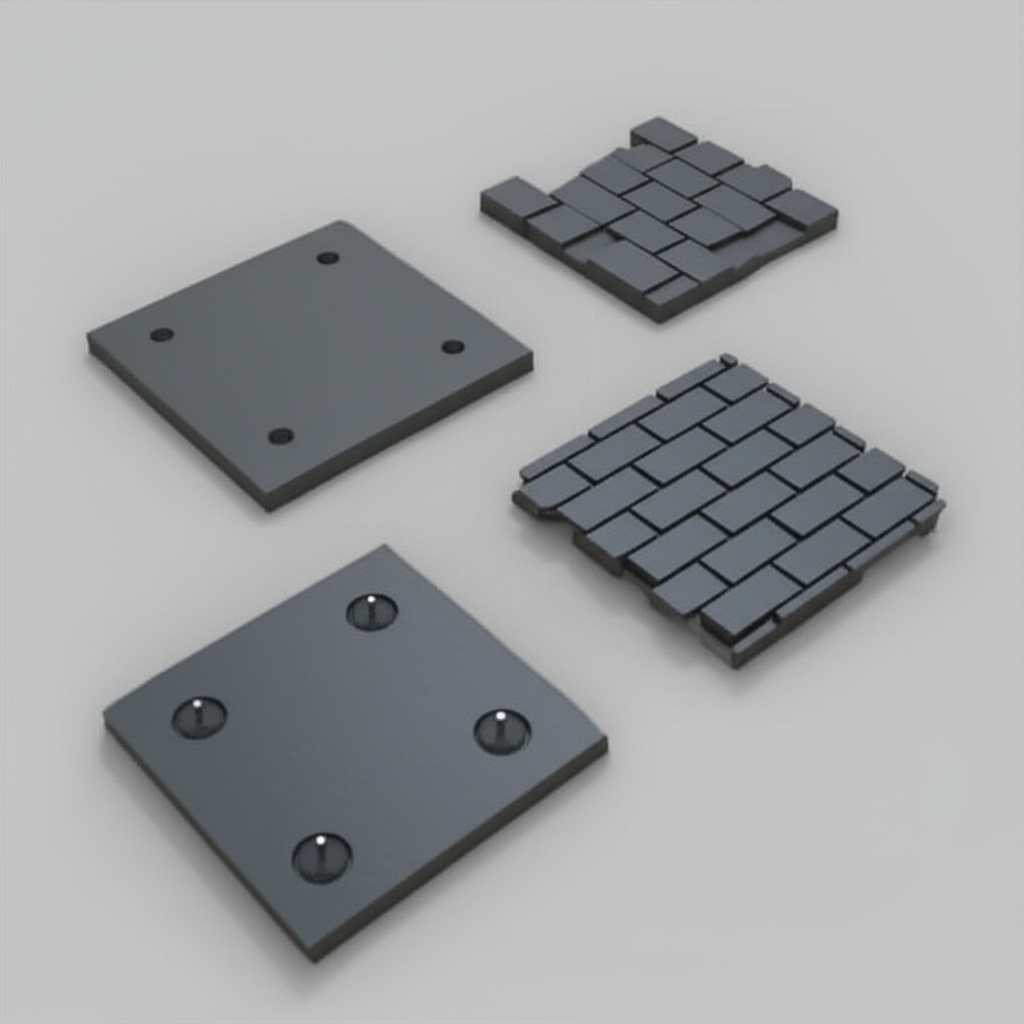Exploring Brazilian SiC Products & Capabilities

Share
Exploring Brazilian SiC Products & Capabilities
In today’s rapidly evolving industrial landscape, the demand for materials that can withstand extreme conditions while delivering superior performance is paramount. Among these, silicon carbide (SiC) products stand out as a revolutionary solution, offering unparalleled properties for a myriad of high-performance applications. This blog post delves into the world of custom silicon carbide, exploring its critical role across diverse industries, from semiconductor manufacturing to aerospace, and highlighting the capabilities available for global procurement.
Why Custom Silicon Carbide is Essential
Custom silicon carbide products are not merely components; they are engineered solutions designed to meet the precise demands of highly specialized applications. Their unique combination of properties makes them indispensable where conventional materials fail. SiC boasts exceptional thermal resistance, maintaining structural integrity and performance even at temperatures exceeding 1,500°C. Its superior wear resistance ensures longevity in abrasive environments, significantly reducing downtime and maintenance costs. Furthermore, SiC’s remarkable chemical inertness makes it highly resistant to corrosion from acids, alkalis, and other harsh chemicals, making it ideal for aggressive processing environments. This combination of properties makes custom SiC an indispensable material for engineers, procurement managers, and technical buyers seeking optimal performance and reliability in their most critical systems.
Main Applications of Silicon Carbide
The versatility of silicon carbide allows it to transcend traditional material limitations, finding critical applications across a broad spectrum of industries:
- Semiconductor Manufacturing: SiC is pivotal in the production of high-power, high-frequency, and high-temperature electronic devices. Its excellent thermal conductivity and electrical properties make it ideal for SiC semiconductor wafers, epitaxy tools, and process components within demanding cleanroom environments.
- Automotive Companies: The burgeoning electric vehicle (EV) market relies heavily on SiC for power electronics, including inverters, converters, and on-board chargers, due to its ability to handle higher voltages and temperatures, leading to smaller, lighter, and more efficient systems.
- Aerospace Companies: For aircraft and spacecraft, custom SiC components are used in high-temperature engine parts, thermal management systems, and lightweight structural elements, where their strength-to-weight ratio and heat resistance are critical.
- Power Electronics Manufacturers: Beyond automotive, SiC enables the development of more efficient power modules, rectifiers, and switches for various applications, including industrial power supplies and grid infrastructure.
- Renewable Energy Companies: SiC power devices enhance the efficiency of solar inverters and wind turbine converters, maximizing energy harvesting and reducing system losses.
- Metallurgical Companies: SiC’s extreme heat and wear resistance make it invaluable for furnace components, crucibles, and refractory linings used in high-temperature metal processing.
- Defense Contractors: Its ballistic properties and resistance to harsh environments make SiC suitable for body armor, protective plates, and components in various defense systems.
- Chemical Processing Companies: Pumps, valves, seals, and heat exchangers made from SiC withstand corrosive chemicals and abrasive slurries, ensuring operational integrity and safety.
- LED Manufacturers: SiC substrates are increasingly used for GaN-on-SiC LED production, offering superior thermal management and light output.
- Industrial Equipment Manufacturers: From bearings and seals to nozzles and cutting tools, SiC improves the lifespan and performance of machinery in demanding industrial settings.
- Telecommunications Companies: SiC-based power amplifiers and RF components are crucial for high-frequency communication systems, including 5G infrastructure.
- Oil and Gas Companies: SiC components resist erosion and corrosion in downhole tools, pumps, and valves, enhancing reliability in challenging environments.
- Medical Device Manufacturers: Biocompatibility and wear resistance make SiC suitable for certain medical implants and surgical instruments.
- Rail Transportation Companies: SiC power modules contribute to more efficient traction systems in trains and high-speed rail.
- Nuclear Energy Companies: SiC’s neutron radiation resistance and high-temperature stability are being explored for next-generation nuclear reactor components.
Recommended SiC Grades and Compositions
The performance of silicon carbide products is highly dependent on their specific grade and composition. Understanding the nuances of each type is crucial for optimal material selection:
| SiC Grade | Description & Properties | Typical Applications |
|---|---|---|
| Reaction-Bonded SiC (RBSiC) | High strength, excellent thermal shock resistance, good wear and corrosion resistance. Formed by infiltrating porous SiC preforms with molten silicon. Contains free silicon. | Kiln furniture, pump components, wear plates, large structural components, nozzles. |
| Sintered SiC (SSiC) | Extremely high hardness, superior wear and corrosion resistance, high strength at elevated temperatures, no free silicon. Densified through sintering at high temperatures. | Mechanical seals, bearings, cutting tools, ballistic armor, high-temperature furnace components. |
| Nitride-Bonded SiC (NBSiC) | Good thermal shock resistance, moderate strength, good oxidation resistance. Formed by reacting silicon and silicon nitride in a nitrogen atmosphere. | Refractory components, kiln furniture, lower temperature furnace linings, specialized nozzles. |
| Chemical Vapor Deposition SiC (CVD SiC) | Extremely high purity, theoretical density, isotropic properties, excellent surface finish. Deposited from gaseous precursors. | Semiconductor equipment components, optical components, high-precision fixtures. |
Selecting the right SiC grade is a critical first step. Expert consultation with a custom SiC manufacturer is highly recommended to align material properties with application requirements.
Design Considerations for SiC Products
Designing with silicon carbide requires a specialized approach due to its unique material characteristics, particularly its hardness and brittleness. Careful design can mitigate common challenges and optimize performance:
- Geometry Limits: Avoid sharp corners, abrupt changes in cross-section, and large unsupported spans, which can act as stress concentration points. Incorporate generous radii and smooth transitions.
- Wall Thickness: Aim for uniform wall thicknesses to ensure consistent material density and minimize warpage during manufacturing. Thin sections can be fragile, while overly thick sections can be difficult to densify.
- Stress Points: Identify potential stress points early in the design phase, particularly where components are joined or subjected to external forces. Finite Element Analysis (FEA) can be invaluable.
- Machinability: While SiC is extremely hard, it can be machined with diamond tooling. Design features should consider the limitations and costs associated with diamond grinding.
- Tolerances: Understand achievable tolerances for the chosen SiC grade and manufacturing process. Tighter tolerances often translate to higher costs.
- Mounting & Fastening: Design for robust mounting solutions that account for the material’s stiffness and brittleness. Consider mechanical fastening with compliant interlayers or adhesive bonding where appropriate.
Tolerance, Surface Finish & Dimensional Accuracy
Achieving precise tolerances and optimal surface finishes is crucial for the performance of custom SiC components:
- Achievable Tolerances: While SiC is a hard material, modern grinding and lapping techniques allow for very tight tolerances, often down to micrometers, depending on component size and complexity. Post-sintering machining is typically required for high precision.
- Surface Finish Options: Surface finishes can range from as-fired, which may have a rougher texture, to highly polished surfaces achieved through lapping and fine grinding. A smoother surface finish generally improves wear resistance, reduces friction, and enhances sealing capabilities.
- Dimensional Accuracy: Depending on the manufacturing process (e.g., green machining followed by sintering, or near-net-shape forming with post-processing), the dimensional accuracy can vary. Sintered SiC often requires diamond grinding for the highest precision.
It’s vital to communicate specific tolerance and surface finish requirements to your SiC supplier during the quoting phase to ensure the manufactured part meets your exact specifications.
Post-Processing Needs
While SiC offers inherent advantages, certain post-processing steps can further enhance its performance and durability:
- Grinding: Diamond grinding is the primary method for achieving tight tolerances and specific geometries after initial sintering.
- Lapping & Polishing: For critical sealing surfaces, optical applications, or low-friction requirements, lapping and polishing can achieve mirror-like finishes and extreme flatness.
- Sealing: Depending on the application, particularly in vacuum or high-pressure systems, hermetic sealing might be achieved through brazing, diffusion bonding, or specialized adhesives.
- Coating: In some cases, specialized coatings can be applied to SiC for enhanced properties such as improved corrosion resistance in specific environments, anti-fouling, or tailored electrical properties.
Common Challenges and How to Overcome Them
Despite its remarkable properties, working with silicon carbide presents specific challenges:
- Brittleness: SiC, like other advanced ceramics, is inherently brittle. This means it has a low tolerance for tensile stress and impact.
- Overcoming: Design components to minimize tensile stress and avoid sharp corners. Implement proper handling procedures and shock absorption in assemblies.
- Machining Complexity: Its extreme hardness makes machining SiC challenging and expensive, typically requiring diamond tooling.
- Overcoming: Design for manufacturability (DFM) by minimizing complex geometries and considering near-net-shape forming processes. Collaborate closely with manufacturers experienced in SiC machining.
- Thermal Shock: While SiC has excellent thermal shock resistance, extreme rapid temperature changes can still induce stress.
- Overcoming: Design for gradual temperature transitions or consider SiC grades optimized for thermal shock.
- Cost: Custom SiC components can have higher upfront costs compared to conventional materials.
- Overcoming: Focus on the total cost of ownership (TCO), considering the extended lifespan, reduced maintenance, and improved performance that SiC offers.
How to Choose the Right SiC Supplier
Selecting a reliable custom silicon carbide supplier is paramount to the success of your project. Here’s what to look for:
- Technical Capabilities: Evaluate their expertise in various SiC grades, manufacturing processes (e.g., sintering, reaction bonding, CVD), and advanced machining.
- Material Options: Ensure they offer the specific SiC grades and compositions suitable for your application.
- Quality Control & Certifications: Look for ISO certifications and robust quality management systems. Request material data sheets and performance guarantees.
- Design & Engineering Support: A strong supplier will offer collaborative design support, helping you optimize your component for manufacturability and performance.
- Production Capacity & Lead Times: Verify their ability to meet your volume requirements and project deadlines.
- Customer Service & Responsiveness: Assess their communication, transparency, and willingness to address your technical questions and concerns.
- Global Reach and Experience: For international projects, consider suppliers with experience in global logistics and regulatory compliance.
Here is the hub of China’s silicon carbide customizable parts factories. As you are aware, the hub of China’s silicon carbide customizable parts manufacturing is situated in Weifang City of China. Now the region has been home to over 40 silicon carbide production enterprises of various sizes, collectively accounting for more than 80% of the nation’s total silicon carbide output.
We, Sicarb Tech, have been introducing and implementing silicon carbide production technology since 2015, assisting the local enterprises in achieving large-scale production and technological advancements in product processes. We have been a witness to the emergence and ongoing development of the local silicon carbide industry.
Based on the platform of the national technology transfer center of the Chinese Academy of Sciences, Sicarb Tech is part of Chinese Academy of Sciences(Weifang) Innovation Park, an entrepreneurial park that collaborates closely with the National Technology Transfer Center of the Chinese Academy of Sciences. It serves as a national-level innovation and entrepreneurship service platform, integrating innovation, entrepreneurship, technology transfer, venture capital, incubation, acceleration, and scientific and technological services.
Sicarb Tech capitalizes on the robust scientific, technological capabilities and talent pool of the Chinese Academy of Sciences . Backed by the Chinese Academy of Sciences National Technology Transfer Center, it serves as a bridge, facilitating the integration and collaboration of crucial elements in the transfer and commercialization of scientific and technological achievements. Moreover, it has established a comprehensive service ecosystem that spans the entire spectrum of the technology transfer and transformation process. This offers more reliable quality and supply assurance within China.
Sicarb Tech possesses a domestic top-tier professional team specializing in customized production of silicon carbide products. Under our support, 505+ local enterprises have benefited from our technologies. We possess a wide array of technologies, such as material, process, design, measurement & evaluation technologies, along with the integrated process from materials to products. This enables us to meet diverse customization needs. We can offer you higher-quality, cost-competitive customized silicon carbide components in China. Feel free to contact us for your specific requirements.
We are also committed to assisting you in establishing a specialized factory. If you need to build a professional silicon carbide products manufacturing plant in your country, Sicarb Tech can provide you with the technology transfer for professional silicon carbide production, along with a full-range of services (turnkey project) including factory design, procurement of specialized equipment, installation and commissioning, and trial production. This enables you to own a professional silicon carbide products manufacturing plant while ensuring a more effective investment, reliable technology transformation, and guaranteed input-output ratio.
Cost Drivers and Lead Time Considerations
Understanding the factors that influence the cost and lead time of custom SiC components is essential for effective project planning and procurement:
- Material Grade: Different SiC grades have varying raw material costs and manufacturing complexities. For example, CVD SiC is typically more expensive due to its purity and deposition process.
- Component Complexity: Intricate geometries, tight tolerances, and highly specialized surface finishes require more extensive machining and post-processing, significantly impacting cost and lead time.
- Volume: Economies of scale apply. Higher production volumes generally lead to lower unit costs due to optimized manufacturing runs.
- Manufacturing Process: The chosen manufacturing method (e.g., pressing, extrusion, slip casting, near-net-shape sintering) influences both cost and lead time.
- Tooling Costs: For new designs, non-recurring engineering (NRE) costs for tooling and molds can be a significant initial investment.
- Quality Requirements: Stringent quality control, testing, and certification can add to the overall cost.
- Supplier Location: Geopolitical factors, shipping costs, and lead times from different regions can also play a role. While Brazil offers burgeoning capabilities, exploring global suppliers like those in China, particularly from the Weifang City SiC hub, can offer competitive advantages in terms of cost and established expertise.
Lead times are influenced by the complexity of the part, the manufacturing process, current production queues, and the availability of raw materials. Early engagement with your supplier is crucial for accurate lead time estimations and project scheduling.
Frequently Asked Questions (FAQ)
- Q1: What are the primary advantages of custom SiC over other advanced ceramics like Alumina or Zirconia?
- A1: While Alumina and Zirconia offer excellent properties, SiC generally surpasses them in high-temperature strength, thermal shock resistance, thermal conductivity, and chemical inertness, especially in acidic and abrasive environments. This makes SiC ideal for the most demanding applications where extreme conditions are present.
- Q2: Is silicon carbide electrically conductive or an insulator?
- A2: Silicon carbide is a semiconductor, meaning its electrical conductivity falls between that of a conductor and an insulator. Its electrical properties can be tailored through doping, making it highly versatile for various electronic and power applications. For instance, SiC power devices leverage its semiconducting properties, while structural SiC components often act as electrical insulators in their as-fired state.
- Q3: Can custom SiC components be repaired or refurbished?
- A3: Due to the extreme hardness and monolithic nature of SiC, traditional repair methods like welding are not feasible. Minor surface damage might be addressed through localized grinding or polishing. However, for significant damage or structural failure, replacement is typically the most viable option. Designing for modularity can facilitate easier replacement of individual SiC components.
Conclusion
Custom silicon carbide products are at the forefront of advanced materials engineering, offering unparalleled performance in the most demanding industrial environments. Their exceptional thermal, mechanical, and chemical properties make them indispensable for industries ranging from semiconductors and aerospace to power electronics and renewable energy. By understanding the various SiC grades, meticulous design considerations, and the importance of selecting a capable supplier, engineers and procurement managers can unlock the full potential of this remarkable material.
The journey into custom SiC is an investment in long-term reliability, efficiency, and innovation. Partnering with a knowledgeable and experienced SiC manufacturer like Sicarb Tech ensures that you gain access to not only superior products but also invaluable technical expertise and comprehensive support, from initial design to full-scale production. Embrace the power of custom silicon carbide and elevate your industrial applications to new heights.

About the Author: Sicarb Tech
We provide clear and reliable insights into silicon carbide materials, component manufacturing, application technologies, and global market trends. Our content reflects industry expertise, practical experience, and a commitment to helping readers understand the evolving SiC landscape.




